What are jewellery findings? Well, in simple terms They are used to connect jewellery components together. Hence, every jewellery designer must be acquainted with these findings.
Jewelry findings are jump rings, clasps, necklace hook, eye pins, bead caps, earrings hooks etc. which are essential supplies you must-have in your jewellery making kit.
Jewellery making is absolutely incomplete without findings. I mean, how could you connect the beads, strings altogether without these components? Right? Let us delve deep and understand the basics.
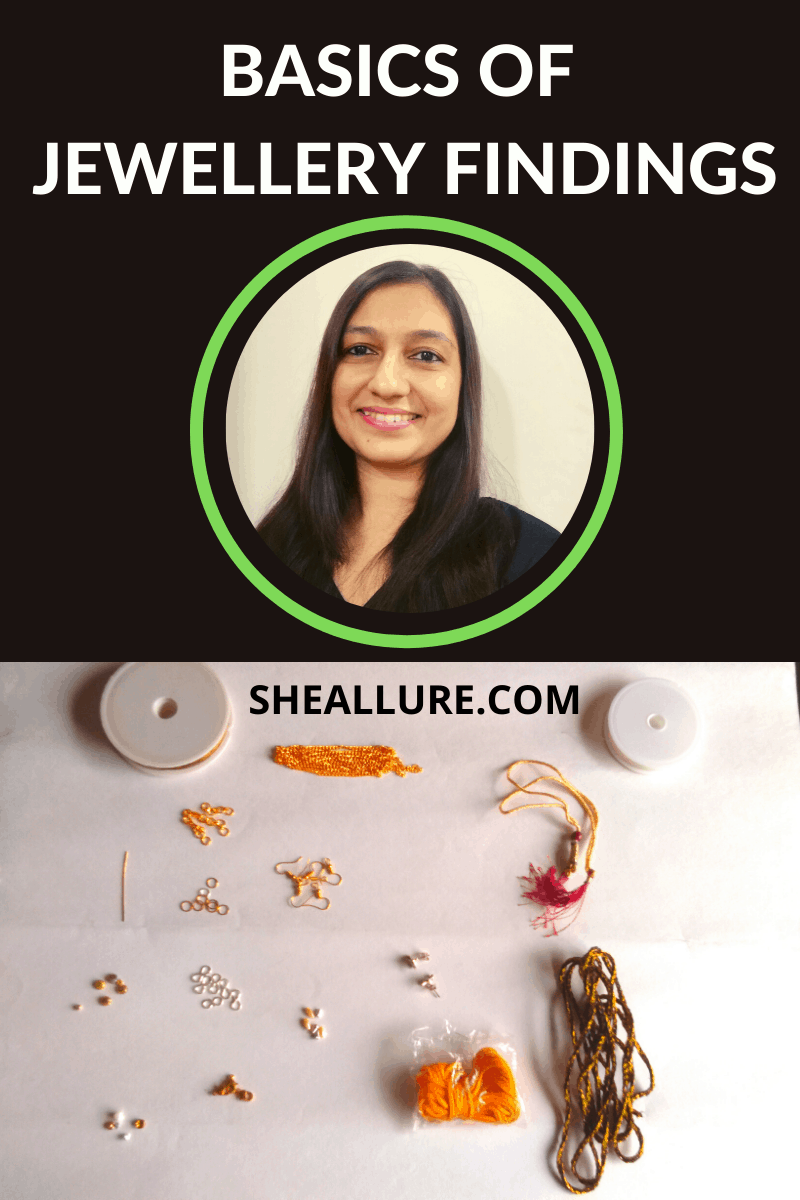
What are Jewellery Findings?
What are jewellery findings? that you need to acquaint yourself as a beginner jewellery artist. Jewellery findings serve as a bridge between jewellery making supplies.
Let me teach you the basics along with the functionality of each component with images. Take a look and do share your thoughts with me.
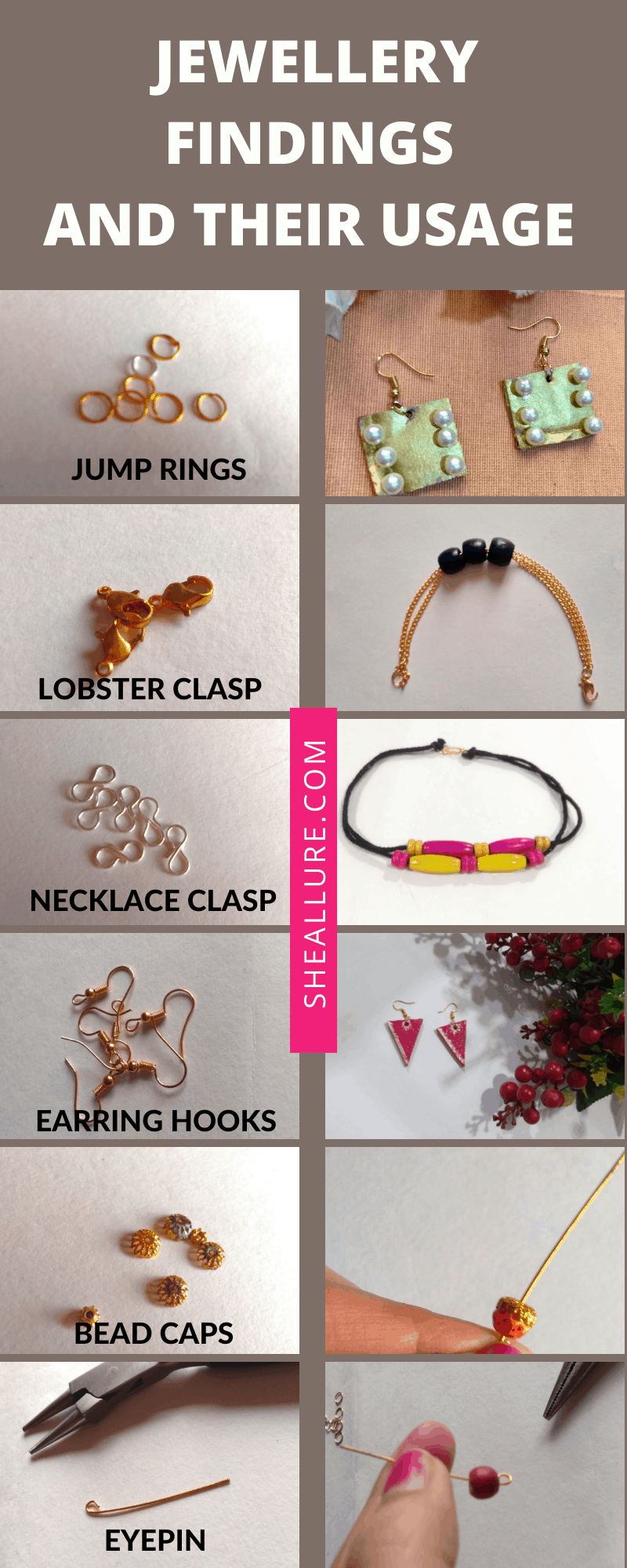
1. Jump rings
Jump ring is a small ring shape finding used to connect jewellery components together. Like, if you’re making a pendant, you put the jump into the hole.
Two crucial aspects you need to remember – Diameter which means how small or big the size of the jump ring you have. Secondly, Gauge means the thickness of the wire. You can explore more details on jump rings with The Spruce Crafts.
2. Lobster Clasp
Lobster clasp is a very crucial finding that is used to connect two sides of your jewellery like necklace and bracelet. It appears as a question mark containing a sliding lock that makes it easy for the wearer.
I would define this essential finding as a sliding lock connected at the end. So, make sure you have this finding in your jewellery making kit.
3. Necklace Clasp
Necklace clasp is another great jewellery finding to connect the two components of your necklace. It’s an “S” shaped hook which works exactly the same as a lobster clasp.
The only difference between this clasp and the lobster clasp is that the necklace clasp does not contain a sliding lock whereas the latter does.
4. EyePins
An eye pin is a needle-like straight wire with a small loop at the top. Eye pins are used in making pendants, necklace danglers and beading purpose.
It is used with the help of a round nose plier for making a loop at the other end. This ensures securing the small beads and connects other jewellery components.
5. Bead Caps
Bead caps add much to your jewellery craft you can ever imagine. It comes in flowers, filigree caps, brass round shapes, copper caps, gold-plated caps, etc. Bead caps dress up your beads as the upper layer and lower layer.
6. Chain
Well, many people are not aware that the chain is a finding. The chain allows stringing beads. It’s is a base for your jewellery making craft. Without a chain, how will anyone put the beads and components together to a certain length? Right.
7. Tigertail Wire
Tigertail wire is an amazing jewellery finding that is a metal like wire used for making beautiful necklaces and long danglers. It is bent at the end with a crimp bead and flat nose plier.
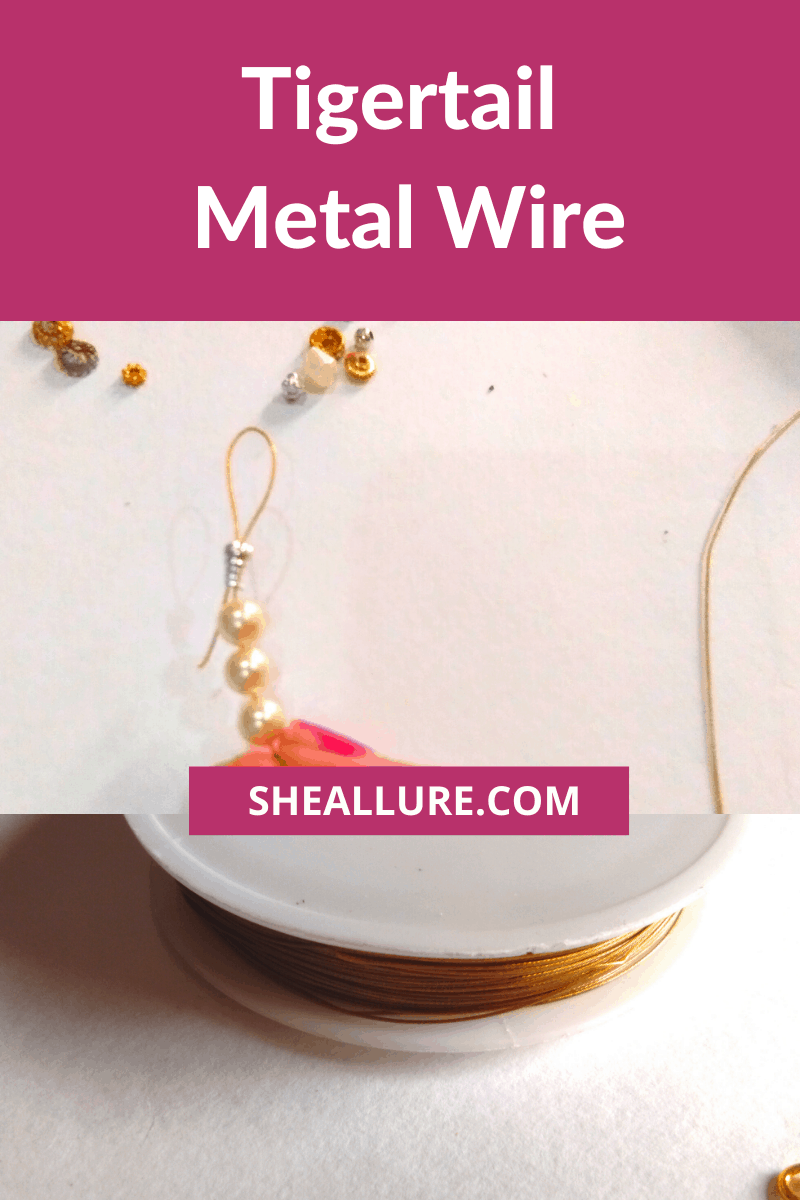
9. Stretch Cord
Stretch cords are basically used for making handmade bracelets. They are a very basic and must-have jewellery finding for designers.
10. Crimp Beads
Crimp beads are pipe-like small jewellery finding that secure the ends of metal wire with a flat nose plier. Suppose you are making a necklace with a metal wire, Once you reach the end of stringing bead, a crimp bead is inserted and slightly pressed by a flat nose plier.
11. Earring hooks
Earring hook is an essential finding that you must have in your jewellery box. It is used in making earrings connected with a jump ring. It comes in different shapes, you can choose any as per your choice.
12. Head Pins
Headpins have a flattened head at the top instead of a loop. It is used primarily in making small earrings where small beads are inserted and the head part of the pin stops the bead. It is closed by making a small loop by a round nose plier.
13. Ring base
The ring base is the simplest findings that come in readymade pieces in the craft store or online. You can connect fancy colored wood shapes with a ring base with super glue to make a beautiful homemade ring.
14. Hoop Loops
Hoop loops are round metal shaped finding for making hoop earrings and they are very popular accessories. Use the wire-looping technique to make stunning hoop loop earrings at home.
15. Push Locks for Earring Studs
Have you ever noticed the back locks while wearing small earring studs? Well, they are basically the push locks that prevent your earring from dropping. Hence, It is a very crucial jewellery finding.
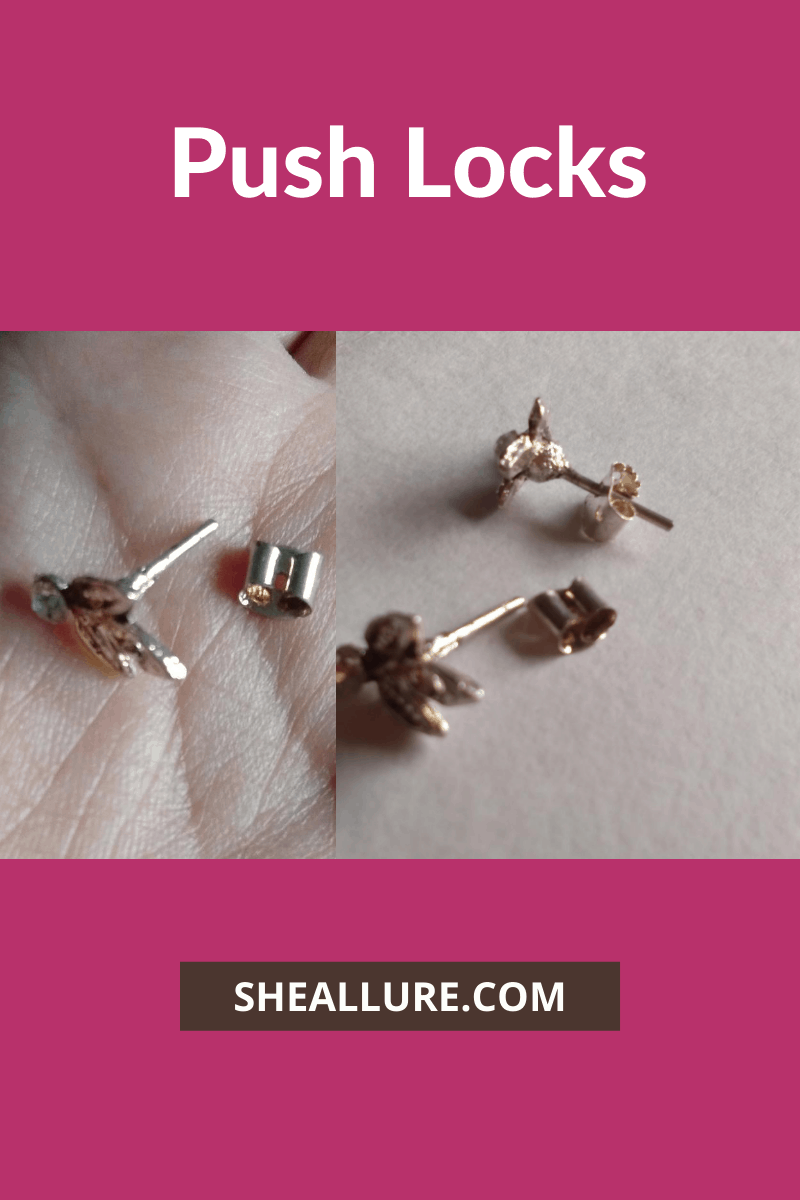
16. Spacer Beads
Spacer beads also referred to as the filler beads used in making necklaces or bracelets. It comes in different shapes such as round, butterfly, wings, and small pipe shapes. They are smaller in size and materials such as brass, gold-plated, silver or filigree.
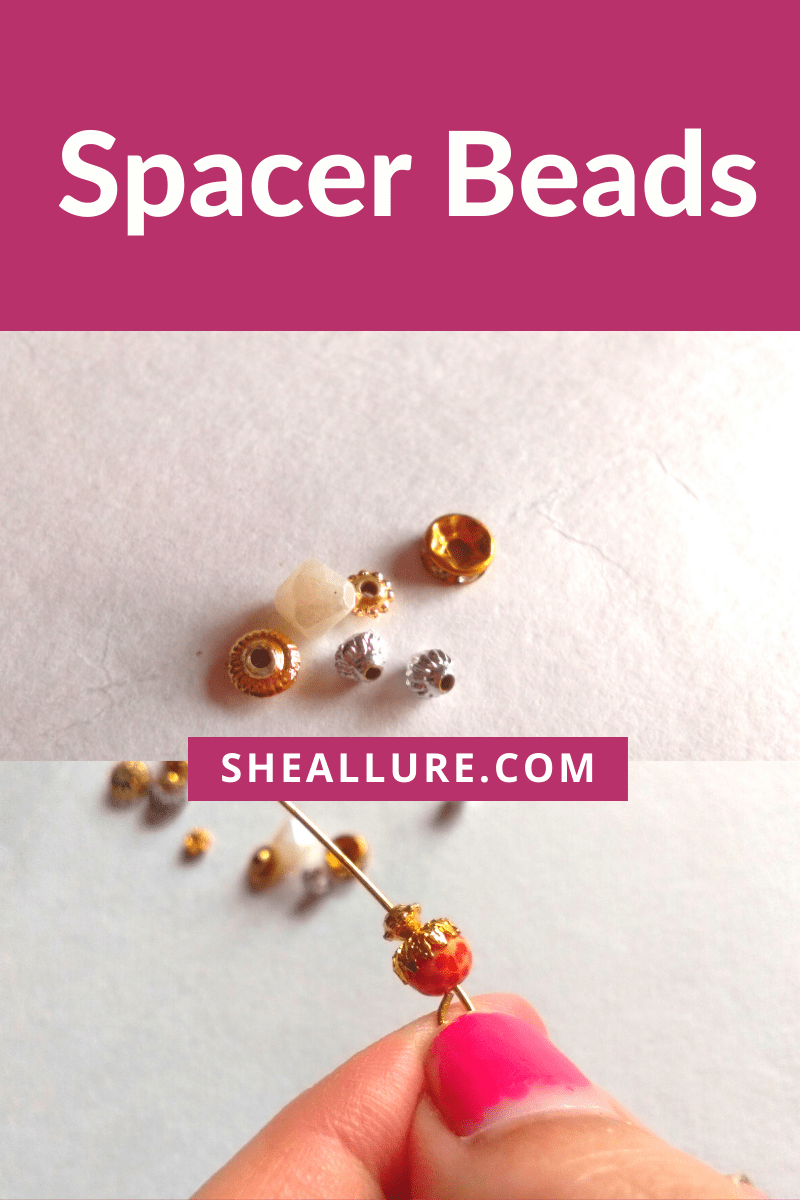
Is String Cord a Jewellery Finding?
Well, the answer to this question is – Yes! The strings such as cotton, silk, nylon cord, wax cord, and hemp cord are the jewellery findings. Reason being, they are the essential components for making pendants and necklaces.
17. Hemp cord
Hemp cord is bast fiber which is further processed and rolled to make stronger yarn. Hemp cord is also a jewellery finding. They are used for making simple anklets.
18. Cotton Strings
Cord such as nylon, silk, or cotton wax threads is used for making bracelets, pendants, and necklaces. Hence, they are jewellery finding.
19. Pinch and Crimp Bail
Pinch and crimp bail is used in making pendants. It is connected with a jump ring by pressing a bit by using a flat nose plier to pinch that close. Put the chain or cord inside the crimp bail to make a pendant.
Essential Tools Required to Make Jewellery Findings
In order to use your jewellery findings, you will require exquisite tools to crimp them. Let me share the basic tools required for making handmade jewellery.
-
Flat Nose Plier
Flat nose works essentially to open, close jump rings and chain links. It is also used to grip flat objects, bend and straightening thin wires.
-
Chain Nose Plier
A chain nose plier is also referred as a round nose plier. It used basically used for making wire loops. You can even use it for making eye-pins with metal wires.
-
Side Cutter
A side cutter is used to cut the ends of metal wires. It cuts accurately the length of the wire while making findings or wire jewellery at home.
-
Tweezer
Tweezer is quite a handy tool used to gently hold small beads and other jewelry making techniques where we use findings. Therefore, you must have this small tool with you.
Make Your Own Findings and Inspire
Have you ever wondered about making your own jewellery findings? Well, it isn’t a difficult task if you don’t want to make a purchase and this what I call – perfect DIY skills. Make things on your own and inspire.
-
DIY Jump rings
To make your own jump ring you will require a thin cylindrical piece like a pen that will make perfect round shape jump rings and metal wires. Roll them over the pen and snip off the extras using a plier cutter. Finally, pull off your jump rings from the pen one by one.
-
DIY Eyepins
Measure metal wire length and trim it. Take a round nose plier and slightly bent the wire and make a small loop. You can make multiple eye pins from metal wires. So easy!
-
DIY Ring base
Do you know you can make a ring base with a metal wire or paper clips? Well, let me tell you friends, I have recently tried making a resin ring and made a ring base on my own.
I hope you got some clarity on jewellery findings. Even if you don’t have readymade findings you can make your own things with simple techniques. Try yourself and master this art.
In case you have any questions, please feel free to drop in the comment section. I will respond to them right away. Also, do share your feedback or suggestions with me. I would love to see them. Thank you.
